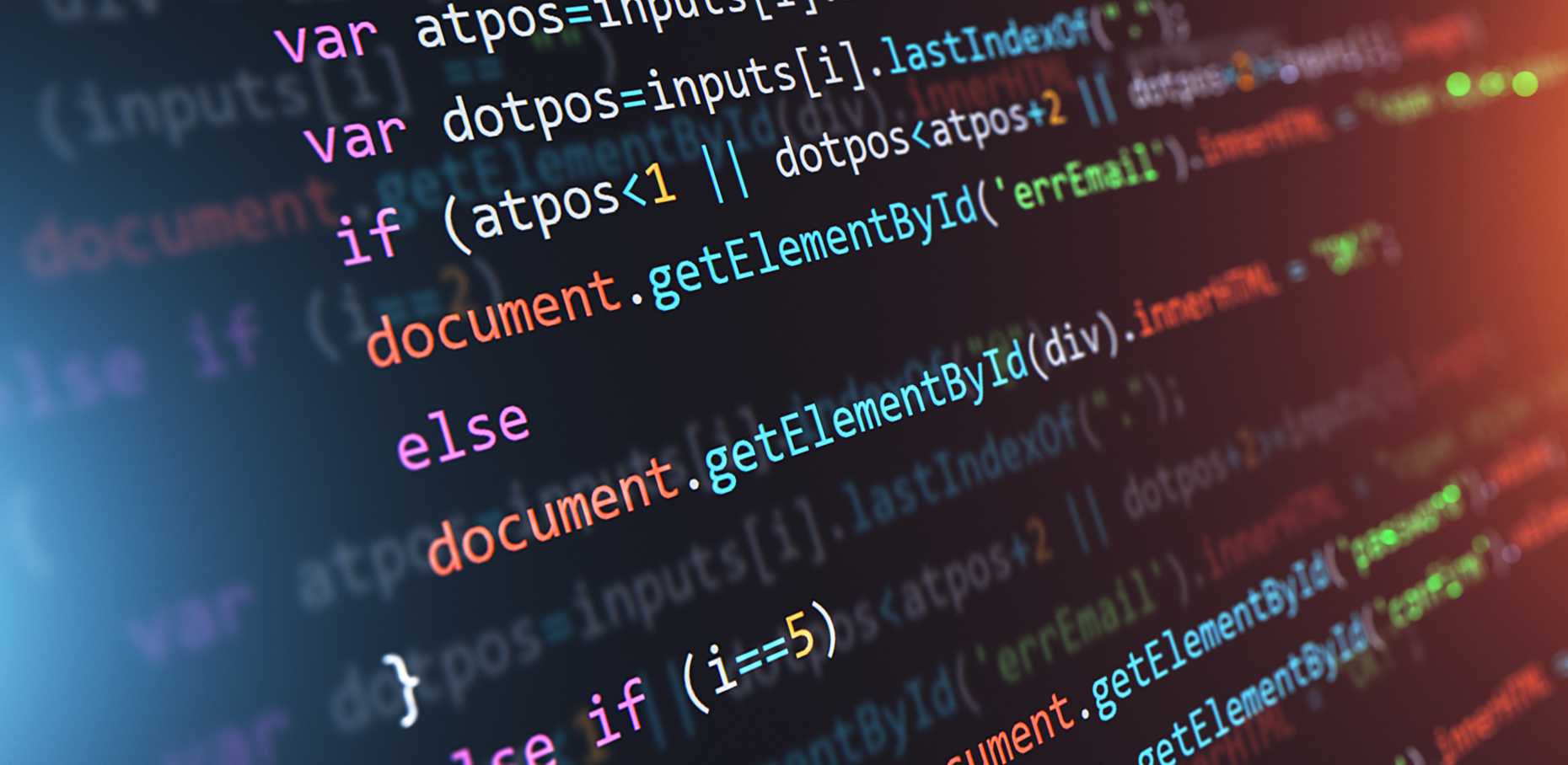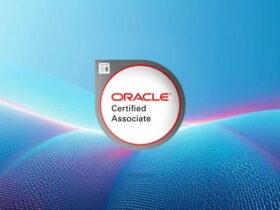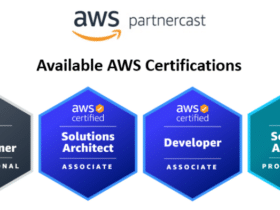In the vast universe of programming, a peculiar subset of languages exists that defies convention and sparks imagination. These unconventional coding systems, ranging from Shakespearean dialogue to invisible characters, offer unique perspectives on programming concepts.
While most developers stick to mainstream options, there are over 8,000 programming languages in existence, including some that push the boundaries of what we consider ‘code.’
These quirky languages not only challenge traditional norms but also inspire creativity in unexpected ways, inviting curious coders to explore the wild and wonderful world of esoteric programming.
1. Shakespeare Programming Language (SPL)
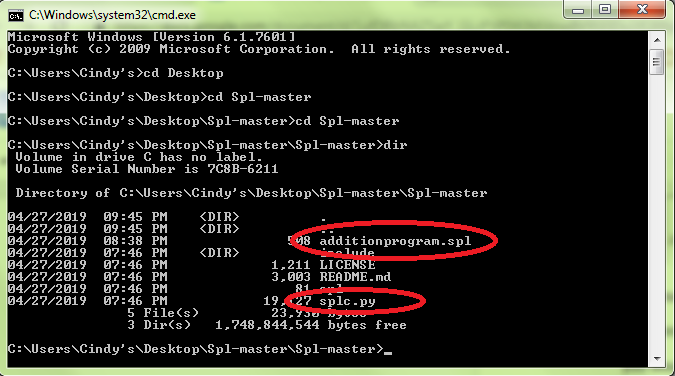
The Shakespeare Programming Language (SPL) turns computer code into a unique form resembling Shakespearean plays.
In SPL, variables become characters, and operations take the form of dramatic dialogues. This unusual approach structures programs as acts and scenes, with character interactions driving the logic of the code.
SPL is a Turing-complete language, which means it can perform any computation that other programming languages can.
Despite its unconventional syntax, SPL is capable of handling complex tasks. However, it’s not designed for everyday use in software development.
To write an SPL program, you’ll create a cast of characters and assign them roles that correspond to variables in traditional programming.
The characters then interact through dialogue, which represents the actual operations and logic of the program. Each act and scene in the program serves as a way to organize different sections of code.
While SPL may seem impractical, it serves an important purpose in demonstrating the creative possibilities in programming language design. It challenges developers to think differently about how code can be structured and expressed.
This out-of-the-box approach can inspire new ideas in more conventional programming languages.
Learning SPL can be a fun exercise for programmers looking to expand their skills and understanding of language design. It encourages creative thinking and can help developers approach problem-solving from new angles.
However, it’s important to remember that SPL is primarily an educational and experimental tool rather than a language for building practical applications.
2. ArnoldC
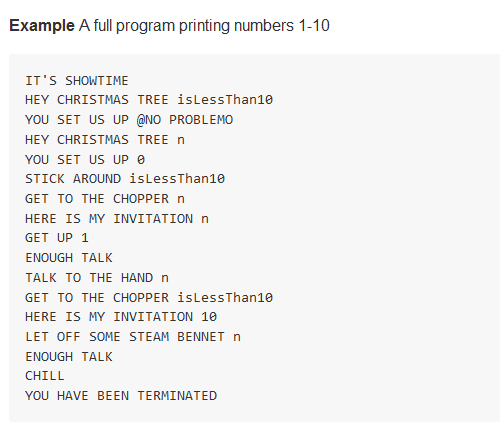
ArnoldC is a unique programming language inspired by Arnold Schwarzenegger‘s famous movie quotes. It uses phrases from his films to structure its syntax and commands.
For example, ‘IT’S SHOWTIME’ declares the main method, while ‘HASTA LA VISTA, BABY’ terminates the program.
This unconventional approach to programming language design serves an educational purpose. It demonstrates how creative and flexible programming language creation can be.
ArnoldC showcases the potential for incorporating pop culture references into coding syntax, making it an intriguing learning tool for beginners.
While ArnoldC isn’t suitable for large-scale software development, it offers valuable insights into language design principles.
It illustrates how familiar phrases can be repurposed to represent programming concepts, potentially making coding more accessible to newcomers.
The language’s structure also highlights the importance of clear and memorable syntax in programming.
By using well-known movie quotes, ArnoldC creates a connection between popular culture and coding, potentially sparking interest in programming among movie enthusiasts.
Understanding ArnoldC can help you grasp the fundamentals of language design and syntax creation. It demonstrates that programming languages can be both functional and engaging, encouraging creative thinking in the field of computer science.
3. Chef

Chef is a programming language created by David Morgan-Mar in 2002. It turns cooking recipes into valid computer code, combining cooking and programming in a unique way.
The language uses ingredients as variables and mixing bowls as stacks. Cooking instructions become programming operations. You’ll see familiar programming concepts like loops and conditionals expressed through cooking terms.
This language shows how programming ideas can be applied to unexpected areas. Chef uses simple, everyday cooking vocabulary to represent complex programming concepts.
For example, ‘mixing’ ingredients might represent adding numbers, while ‘baking’ could stand for a loop that repeats until certain conditions are met.
To write a program in Chef, you start with a recipe title, list ingredients with their amounts, and then provide step-by-step cooking instructions.
These instructions are actually programming commands in disguise. The language interpreter reads these instructions and executes them as a computer program.
Chef demonstrates that programming can be creative and accessible. It helps people understand programming concepts through a familiar activity like cooking.
This approach can make learning to code less intimidating for beginners. It also shows experienced programmers how to think about coding in new and innovative ways.
While Chef isn’t used for serious software development, it serves as an educational tool and a fun way to explore programming concepts.
It encourages people to think differently about how instructions can be written and interpreted. This kind of creative thinking is valuable in many areas of computer science and software engineering.
4. Whitespace
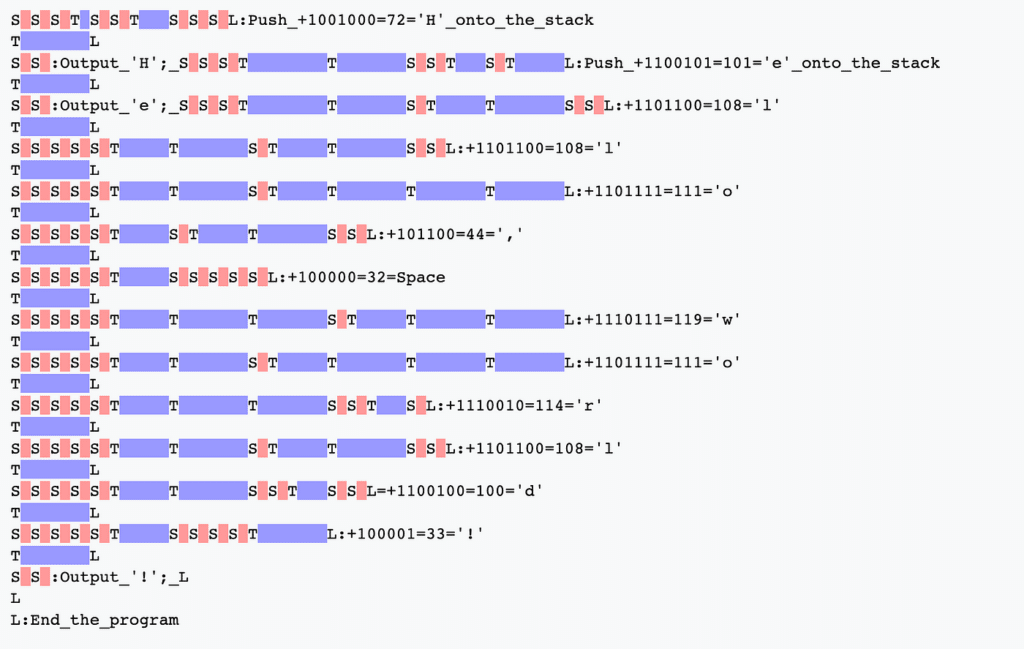
Whitespace is a unique programming language created in 2003 by Edwin Brady and Chris Morris. It stands out from other languages because it uses only spaces, tabs, and line feeds as its syntax.
This unusual approach makes Whitespace code appear invisible to the naked eye, setting it apart from traditional programming languages.
Reading or writing Whitespace programs is difficult without specialized tools. The language uses a stack-based architecture, which adds to its complexity.
While Whitespace isn’t practical for everyday programming tasks, it serves valuable educational purposes. It helps teach programming concepts and allows developers to explore new ideas in language design.
To work with Whitespace, you’ll need specific software designed to interpret its invisible characters. These tools translate the seemingly blank code into readable instructions.
Despite its limitations for real-world applications, Whitespace encourages programmers to think differently about code structure and syntax.
The creators of Whitespace developed it as an experiment in minimalist programming. By reducing code to its most basic elements, they challenged conventional ideas about what a programming language should look like.
This approach forces programmers to focus on the logic and structure of their code rather than its visual representation.
Learning Whitespace can improve your understanding of how programming languages work at a fundamental level. It demonstrates that code doesn’t always need to be visually complex to be powerful.
While you won’t likely use Whitespace for building applications, the insights gained from studying it can enhance your skills in other programming languages.
5. Piet
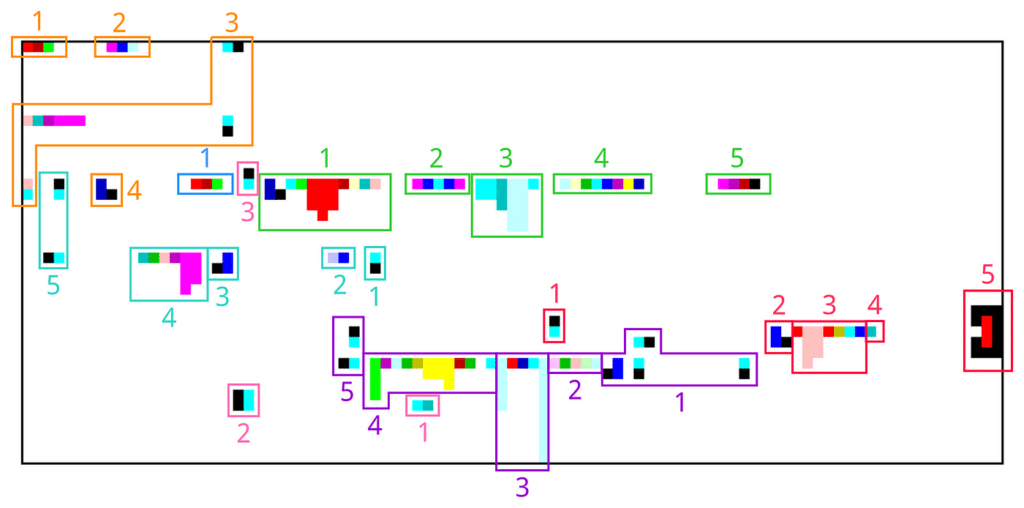
Piet is a unique programming language that combines art and computer science. It uses colorful images as its source code, drawing inspiration from the Dutch painter Piet Mondrian.
In Piet, programs are interpreted as bitmap images, with each pixel’s color representing a specific instruction. The language relies on color shifts to control the flow of the program.
Unlike traditional text-based programming languages, Piet challenges you to think about algorithms visually.
This approach makes it both difficult and fascinating to work with. When you write a program in Piet, you’re essentially creating a piece of abstract art that can be executed by a computer.
To create a Piet program, you’ll need to design an image using a specific color palette. Each color in this palette corresponds to a different programming instruction.
For example, one color might represent addition, while another represents multiplication. The way these colored blocks are arranged determines the order in which instructions are executed.
Program flow in Piet is controlled by the boundaries between different colored areas. The interpreter moves through the image, changing direction when it encounters color transitions.
This unique approach to program control makes Piet programs visually distinct and often aesthetically pleasing.
Learning Piet can be challenging, but it offers a fresh perspective on programming concepts. It encourages creative thinking and can help you understand algorithmic logic in a new way.
While Piet isn’t typically used for practical software development, it serves as an excellent tool for exploring the intersection of art and computer science.









